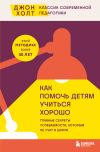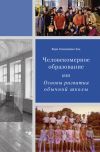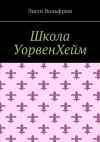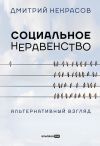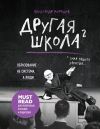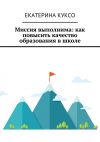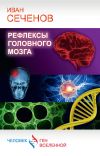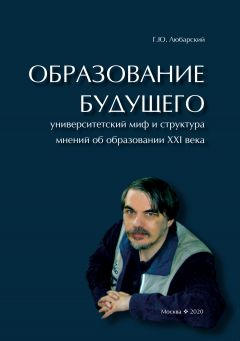
Автор книги: Георгий Любарский
Жанр: Педагогика, Наука и Образование
Возрастные ограничения: +18
сообщить о неприемлемом содержимом
Текущая страница: 57 (всего у книги 58 страниц)
Expanded Abstract
The education of the future is quite a challenging problem, as the future tends to emerge from the past. And our past offers little hope for a promising future. The education of the future is an attempt to tap into the process and contribute some features not prompted by causality, features that could make the future tolerable. Hence, the book about the education of the future outlines the projects, ideas, perspectives, hopes, and myths. That is the very substance shaping the future. This book is about the history of educational institutions, ideas that have been implemented and distorted, hopes that have driven populations, and perspectives of our contemporaries who are making the future now and have to deal with whatever has been done by others.
This book discusses what people think about education: about school, classical literature, practicality of certain educational subjects, new educational technology, etc. The book comprises two parts; the second part outlines the research findings, the things that may be seen through a certain lens, people's visible perspectives. The first part depicts the design of the lens used to approach such perspectives: the author's vision of the design of education, of the way it combines its conflicting values, of the way this social institution is structured and positioned in relation to the other social institutions.
School is not the only institution to frame the image of the world for our contemporaries: students learn a lot from mass media serving, without limitation, as an educational institution that suggests the general information about the world order. Meanwhile, the world of media is very different from the world of school knowledge. If we put it in the most simple-minded manner, the school provides pupils with true facts about the composition of the world. In the world of media, however, the most important criteria for a message are not truth and logic, but rather novelty and topicality.
It would be false to state that the world of media abounds in lies. This is not true. The world of media has no truth. Hence, it has no lies either. So, it makes no sense asking whether something is true in this world. The reason is that there is no way to figure it out. The notion of truth is not defined, as there is no such concept in the world of media, and should we try to define it in non-media terms, we will find out that there is no way to make sure whether something is true or false. The world of media is absolutely different from the world of truth. It is the world of opinions.
The media enjoy a special place in the social world: they affect all social institutions they come in contact with by magnifying the 'disturbances', by amplifying the signal. This effect is known as 'positive feedback'. Mass media serve as a magnifier. And what is positive feedback? In simple terms, it is the explosion. The media are connected with every unit of society and send a signal to each unit at each operating cycle of the system, which magnifies any deviation from a stable condition. Any error grows bigger, escalates, and superheats progressively until the system is blown to bits. Therefore, it is no wonder that media activities are generally perceived from a negative perspective and that media 'neutrality' is viewed as a positive phenomenon. The media are irresponsible in their capacity of magnifier, as their sole priority is to enhance the impact in disregard of its substance and role. The media serve as a catalyst that 'pushes social processes up' to a critical rate.
This design and nature of the media are due to the fact that they are tooled for news production. The media magnify and accelerate social processes, which explains why media impact is devastating most of the time. Why do people need 'easy-to-digest hot news' that lead to social collapse? Novelty is opposite to stability. The fact that the contemporary society gives rise to a lot of innovation is synonymous to the loss of stability and predictability in the society and its members' lack of confidence in the existing social forms.
A piece of news is a frame for everyday routine. The media pick up certain pieces of this routine and frame them as news. Framing, or creation of a piece of news, gives rise to a new background implied by the relevant piece of news – the background of everyday routine. However, this new routine is different from what it used to be. The framing of a certain event engenders both a piece of news and a background. The very production process that in the simplest possible case involves emphasizing a piece of everyday routine with a frame and marking it 'new' on this frame represents an act of emphasizing a piece of reality, which in turn, creates a background that has not existed before by the same act of emphasizing the new.
Anything outside the news frame is viewed as universally known routine. It is perceived as 'non-new' routine that is primarily characterized by the fact that it is not new. This peculiarity implies that anything omitted from the news is not new, and thus, known to the viewer. The reader finishes the job started by the media. He/she looks at everyday routine and surroundings through the newsfeed filter to identify the things communicated by the media as the 'new' and to label the things omitted by the media as 'usual routine'. This is how the media give rise to a surrogate everyday world: it is made of every individual's image of reality seasoned with news.
Mass media create a special reality where both the specifically designed background and the image artfully placed thereon indoctrinate the public with the idea that their perception of the 'ordinary' life is correct and that there have been no major changes 'since yesterday'. News emphasize the immutability of the background. The more the reality changes, the higher the suspicion that the current background is not as stable as we would like it to be, the brighter the image and the 'hotter' the news are supposed to be: the background will look intact in case of such contrast. The image emphasizes the neutral significance of the background in the same way the background makes the picture distinct and visible. At thorough examination, this background under the news is quite non-trivial and it bears a pretty significant load. It is intended to affirm the viewers' image of the world. In other words, news 'create' social reality and the image of the world as a whole. Affirmation of the fundamental image of the world is just as significant a function of the media as the intensive 'tickling' with entertaining and horrifying news.
This is the critical social function of the media: to create an illusion of stability in an unstable world. The media create the illusion of stability by naming and shaping the change area, emphasizing 'novelty', and ensuring the visibility of the image impressing the idea of background immutability. It is asserted that any new developments in the world are fully covered in the 'News', and the rest is obviously the same, usual, and hence, there is nothing to worry about.
This implies that the destructive nature of the media is an integral part of this social institute's design. The enhancement of signals destabilizing the surrounding social institutions is just an add-on to a truly important function: to maintain the people's illusion that 'in reality' their image of the world is accurate. After watching the news and being horrified by the 'new developments', the individual becomes appeased deep inside: everything else is as usual.
The media machine creates social stability. Its primary function is to move instability from the background into the frame, and stability – from the frame into the background. By creating a generally more stable social environment through modification of reality in each individual, the media magnify instability in the 'frame' producing scandals, bogus stories, conflicts, and fake news as a by-product. Sharing knowledge is not the primary function of the media. The media broadcast the image of the world and inform of any changes therein.
The media shape the image of the world and manage the stability of the surrounding reality. As a result, this quite exogeneous social mechanism, a mass media mechanism that is theoretically supposed to do nothing else but produce news, proves to create the mental normalcy of the population. Such fundamental thing for the society as mental normalcy is not ensured by inner mechanisms of the personality, is not irradiated by every individual, and is not created thereby; instead, it is the product of the media. Normalcy is the epiphenomenon of the media environment.
The media transformed into an educational institution do not represent the only aspect of social life affected by cultural changes. The cultural environment – the invisible air that everybody uses without noticing – has equally changed. The grassroots fundamental common culture that used to be Christian in Europe for long centuries and started being saturated with the secular spirit of science following the centuries of the Enlightenment has been replaced with something new. The place of the general obligatory school education has been taken by a new phenomenon: the occulture.
The common core of culture is shrinking and degenerating, and the ability to understand each other notwithstanding the area of specialization is declining. The communicative unity of the society is vanishing. The limit of this reduction is well-known: the language. Today's cultural context tends to boil down to this minimum.
Mass occult knowledge is currently taking place of the cultural core containing general knowledge. Occulture is communicated together with the image of the world from the media, and yet it is so widespread and so common that, overall, it indeed occupies the same place in the structure of knowledge as school knowledge back in the 19th century. It is something that 'everybody' knows. It is a mixture of contemporary occult practices, non-secret arcane knowledge, waste, and a hodgepodge of everything 'mystical'. School knowledge has ceased to serve as the basis for grassroots public communication. Today, neither school nor classical literature provide the basis for public communication.
A new cultural type of human being is in the making. Lack of systemic thinking is among this human being's features often referred to. The individual is unable to see the gaps in his/her image of the world even after they have been pointed at and has no idea about where and how to procure the information to fill in these gaps. The individual does not know how to acquire new knowledge: if you point at the source and tell him/her to learn the relevant information, he/she may be able to study a specific source; if not, he/she will be unable to find a good source of knowledge and identify the things that could cover the gap in his/her perception of the world. The individual does not know how to proceed from the known to the unknown and is unable to handle levels and limits.
Occulture is advanced by routine daily practices: by computer practices. If we imagine the mechanical civilization of the 19th century, we will see that the practices of dealing with mating wheels, leverages, etc. entail operational mechanical thinking, engineering thinking, search for reasons and patterns of interactions between the elements. Today, our daily experiences are predominantly shaped by the use of button interfaces with neither logic nor mechanical rationality – they are fully dependent on the designer's arbitrary decisions, it is impossible to figure anything out in a complex interface most of the time, and the operational logic is different: you have to press, try, and see what happens, and if you get what you want, you have to memorize it. Acting by trials and errors without any place for principles and logic results in the so-called 'magical thinking'. Knowledge of natural laws grows weak, the mindset is dominated by the conviction that there are no laws other than total arbitrariness.
However, this arbitrariness repeats itself, and therefore, it may be memorized and made use of. Computer interface is the source of occulture – similar to any popular household appliance device, it prescribes the ways for the user to deal with reality.
Occulture has nothing to do with the culture of the elite; instead, it is the daily culture of the public at large, something that comes by itself and soaks in from the omissions in the social environment. This problem becomes manifest in high school and college, but it actually originates from preschool and elementary school. No longer are children vaccinated with a 'natural' injection of 'normal' thinking (thinking that was normal for the cultural context of the past). Elementary school is virtually unable to deal with this area: it is 'programmed' to believe that pupils' thinking is 'already' normal and properly shaped, and thus, it merely adds more to the numerous errors in its curricula and methodologies. Habitual thinking skills are being destroyed and replaced with a new thinking algorithm that fits occulture.
We have to describe the current condition of the social world with unwonted words: occulture proves to be the basic 'folk' culture, mass media are the source of the image of the world, the media represent an internal social explosion, serve as the magnifier of signals, and yet the media ensure the stability and normalcy in the society as one of their primary products. This is what the contemporary education-related institutions look like; and what will they look like in the future?
To speak about the future, we have to address very subtle things: daydreams, hopes, fantasies. They ultimately give rise to purposes. Thereafter, purposes transform into plans followed by pick-up of the relevant means, and this process drives gradual change in the social world. This is the reason why surveying opinions and studying the future make it necessary to deal with these complex and transient concepts – daydreams and hopes.
A certain set of daydreams and ideas covered in the book can be referred to as the concept of a three-component society. To function normally, a society should be designed as a combination of social institutions comprising three aspects: legal, economic, and cultural. Each aspect uses its own means and is not in the position to secure any effects other than the specific effects peculiar thereto. Whatever the State (the law) does is standardized, uniform, legal, and universal. There are things that cannot be addressed by this method. A completely different coercion is ensured by the economic aspect of social reality that is largely independent from the State. The employee-employer relations are quite different, and the power of money is quite different from the power of law.
The legal and economic domains are complemented by the third domain – the domain of culture. It is in a deplorable shape now, as it is inconceivable even at the level of the term. The word 'culture' is currently construed as something synonymous to 'art', as some general notion of art. And yet, the domain of culture equally comprises religious and ethical values that shape behavioral objectives. Science with a good deal of technology qualifies as culture as well. Healthcare and education belong to culture.
The differences between these social domains are due to the operating principle of each, determining the primary operating mode of social institutions in each domain. Actions in the economic domain are driven by necessity, trust, and help, and the whole multitude of economic mechanisms are shaped around these drivers. In the legal domain, actions are determined by equality and fairness – these are the controls that shape the operating principle of law in multiple situations. Culture is primarily shaped by freedom and creativity, and it is the principle of free action that entails crucial consequences: significance of values and authori-tativeness. Authoritativeness does not restrict free action; instead, it is rather a consequence thereof.
The society consists of social institutions constituting its building blocks: social machines. An individual is not a part of the society. What may be construed as tiny units of social machines is social roles, not individuals. Despite being quite obvious, the important idea that the society does not consist of individuals is rather hard to explain to people whose contemporary way of thinking is very different. It is extremely hard to fathom the idea that an individual is bigger than the society, representing a more sophisticated system with a more sophisticated behavior.
The incredible novelty of the social design is concealed by three things: very swift changes in the technosphere, extremely novel and poorly understood design of the economic domain, and totally outdated and inappropriate design of the governmental and legal domain. Bottom line: there is something unshakable which maintains the illusion of immutability, something very fluid going in an uncertain direction, and all this conceals the 'average speed' changes, the changes in the culture-forming institutions that actually shape the future by creating a foundation for the economic domain serving as the basis for the legal domain.
Education requires change. However, nobody knows what exactly should be done and how. Most people are sure that the education that existed four or five decades ago is the best. And yet the same people believe that all changes are for the worse and that nothing can be changed in the society for the better. This is the reason why we should examine how social institutions are created in the first place. Who works such miracles? What kind of gods?
The history of European universities is examined in this book. By the 18th century, the universities were in decay, but they underwent reforms, predominantly under the leadership of baron Gerlach Adolph von Munchhausen (1688–1770) and Wilhelm Humboldt (1767–1835). As a result of reforms, the universities passed under government control thus ceasing to exist as autonomous business entities. The main idea of the German university was to combine research work with teaching, and therefore, the positions of faculty were reserved to the best scholars in a specific area. Yet another important feature of the German university is the principle of three freedoms: freedom of research, teaching, and learning. These are the famous university freedoms. This gave rise to the German university myth. Originally, it was nothing more than an idea and a daydream; later on, it was put in practice, obviously, with a lot of perspiration and errors, and ultimately, it was mythologized. The myth in question was that of an ideal university that produces the best science in the world: a university of scientists.
By the 19th century, there were three types of higher education institutions: the English college, the French higher school (Ecole Normale), and the German research university. These social machines have different designs and they are intended to produce different types of professionals. The college produces the 'gentlemen', colonial administration managers; Ecole Normale produces state engineers; and the German university produces scientists. These three types of higher education emerged in a society divided into Estates of the realm; they make it possible to reach the professional heights for the students from the upper classes and some outstanding representatives of the lower classes.
By the 20th century, mass industrial society took shape and students with a rather low educational level started getting enrolled in university programs (in the previous version of society, admission was subject to gymnasium education; gymnasium is a Faculty of Philosophy separated from the university). In the new mass society, universities grew in number, got bogged down, failed, and were unable to make scientists out of the students from the new mass society. Ultimately, by the mid-20th century, a new type of higher education was created: the American business university.
The American university is based on the idea that it is possible to combine strong intellectual and scientific ambitions and passion for research with a strive to apply this research in practice, generation of profit, and ability to keep in touch with the local government and businessmen by establishing knowledge-intensive enterprises. The university becomes a standalone entity, an independent player in the economic environment, engaged in making profit.
Now the tasks of culture are combined with the economic drivers of competition instead of the governmental drivers.
Generally, higher education in the American type of university is viewed as business activity. And therefore, one can find out what type of market results from trade in educational services. It is a 'market for lemons' (in American slang, a lemon is a car that is found to be defective after it has been bought): in a market dominated by buyers who are not sufficiently aware of the quality of goods and who are unable to verify the quality of goods by available means, the product quality declines and poor-quality goods replace high-quality goods up to complete disappearance of high-quality goods. The quality of goods in a market for lemons selling educational services inevitably declines as soon as education turns into a service that can be bought.
Government support is a well-known measure to prevent quality deterioration in the 'market for lemons'. The situation can be kept under control by the government quality control system, which leads to bureaucratization and substitution of real quality by issuance of 'required licenses and certificates'. However, government control gives rise to the problem of markers that can control the quality of educational services. It is impossible to characterize 'real' education by markers ('quality criteria') adequately, but these criteria are quite handy when describing special knowledge in specific well-established areas of knowledge and business. Therefore, as soon as the quality of education gets under government control, the substance of education ('something unmeasurable', uncontrollable) breaks down and is substituted with a 'combination of positive knowledge' from a certain established field of knowledge/skills that is perfectly controllable by means of tests.
This results in an institutional trap. The university is becoming more profit-oriented; the market it enters proves to be the market for lemons; quality control in this market cannot be handled but by an external force, which calls for the intervention of the public licensing system and use of bureaucratic criteria. As a result, the 'subtle' features of 'general education' vanish; what remains is the 'positive knowledge' in a certain area amenable to criteria-based evaluation, and the ability to do research is not part of such positive knowledge, as it is part of 'subtle' skills. The outcome has to be evaluated in economic terms (profit, etc.). As a result, variations of the American type of university increasingly evolve in the 'economic' direction.
The university shifted from the governmental/legal domain to the economic domain in the US against the background of a rapid and steep increase in numbers: the number of students, faculty, universities, programs, etc. was on the rise. This process is mass higher education in the making. Thus, higher education has become commonplace, its position in the society has changed. But an unsolved problem remained: how to produce scientists in a mass society?
Since the 'lower levels' of the university were increasingly failing (due to lower level of freshmen), a superstructure was created: extension of full education for several years by means of 'PhD programs'. In the American university, a PhD program was turned into a strict system of mandatory courses with multiple forms of academic performance control. As a result, the American business university has two levels: the social form of mass higher education (approximately equivalent to the former secondary education) at the first level, and a separate entity to produce a scientist on the second. The American business university looks as two higher education systems built on top of each other, this is a duplex university.
The school is tuned for higher education: its upper levels are supposed to lead to higher education. And since higher education is in crisis, school education does not feel particularly good either: unaware of its objectives, it is unable to choose the appropriate means. This book explains the school myth. The book makes an attempt to depict the desired state: what a dream school should look like. Obviously, other people's dreams may differ significantly. It is critical to generate a dream of an ideal space to discuss the objectives of school education.
In the meantime, this outstanding issue is currently perceived as a resolved problem and the whole debate is focused on the means.
Now, after we have approached the problem concerning the dreams of the future, let's take a look at how such an oddity as a scale of intellectual skills might look like. School teaches some lower elementary intellectual skills. The university then could be expected to teach some higher intellectual skills. What are these skills? The combinatory skill has become quite popular these days: creativity is highly appreciated, i.e., ability to create new things without inventing anything new. Another advanced skill is to state the same content in documents of a different size. This refers to text contraction, expansion, ability to write abstracts and summaries of texts, and school reports. This is a translation, and moreover, in the broad sense of the term. Not only from one language to another, but equally from a specialist language to a layman's language, from one specialist language to another, from a professional slang to an understandable literary language or more official specialist language. That is, a translation to the extent of a basic skill that does not require any substantive knowledge of at least one foreign language.
In addition – the arguing and explanatory skills. These are two different skills: to find the arguments suitable for a specific statement and for the audience that is able to digest it. Generalization is another valuable skill; this concept is currently construed in multiple different ways, but the meaning implied thereby is the skill to assign appropriate types. There are other higher intellectual skills that are not taught. Why so? Thus, higher intellectual skills are as follows: ability to change the size of a text while preserving its content; translation between different linguistic styles and languages; ability to construct arguments for a given audience; ability to explain the subject to the relevant audience; scanning texts quickly and filtering them based on various criteria. Teaching these (and other) advanced intellectual skills could be the mission of 'general education' in a higher education institution. No such education currently exists, this is just a Utopia, a daydream. How can one imagine the implementation of this Utopia?
The myth of the Russian university could take the shape of a free, open university, where students move from one city to another and study, where eccentric professors prove to be great scientists and appealing personalities, where a student receives more and more sophisticated and incredibly exciting knowledge from one course to another, and where learning is fascinating and somewhat dangerous. In this university, everyone is obsessed with tasks of gaining and discovering new knowledge, human shortcomings are smoothed out by the very fact that the overarching objective for both students and professors is cognition. And everyone does his/her best in this field. This cognitive enthusiasm makes both career and financial ambitions irrelevant. Personality is created by the efforts focused on cognition, as not all character traits are equally conducive to cognition. And people build the personality of a scientist, researcher in themselves from most diverse inputs. This is a combination of the ideals of cognition, equality, open-minded communication, and fraternal attitude to others, and these ideals show themselves through educational activities. This is the ideal of universal knowledge, unifying truth that is not external to personality, but instead, is commensurate to human knowledge.
This is not supposed to mean that the university culture in contemporary Russia has developed more than anywhere else and will now be the first to break some new ground. This is about something totally different. It is necessary to look both at the things that the culture has developed and at the things it longs for, lacks, or misses. The Russian culture is quite preoccupied with knowledge, positive knowledge that is real and non-illusory A social institution designed to generate such real knowledge about the world and human beings is in great demand. This is an intersection of neglect of wealth, distrust of official authorities, and search for truth: there is no logic of achievement here ('we have already done a lot in this field, now we will climb up another step'); instead, this is the logic of pain: 'there is no way we can do without it, absolutely no way, because it is very painful and we are unable to endure it any longer'.
The rationale is based on the longing and real passion, not on achievements. If something is true, it is impossible to fake it. In other places, people want something else, but there is no place where they will want these particular things. It is impossible to fake the voice of spiritual appeal, the voice of ethics, as it does not care about external conditions. There is none? Then create them. This ethical obligation, the desire to create something in the world does not depend on external problems. You don't care whether a certain position is winning or losing, whether others are helping or obstructing the effort. You just need to look for the means to do what you personally consider right. If you think something is necessary, you have no other choice but to do it. All the rest is just chaff that again you choose to devote your life to.
Правообладателям!
Это произведение, предположительно, находится в статусе 'public domain'. Если это не так и размещение материала нарушает чьи-либо права, то сообщите нам об этом.